
Microbial Growth on Joists
Mold and mildew growth on joists in the crawl space are a result of high relative humidity and warm temperatures. Mold will use any organic surface as a food source, in the crawl space this is often the floor joists and paper backing of fiberglass insulation. If the wood moisture content reaches 19%, the potential for wood rot occurs.
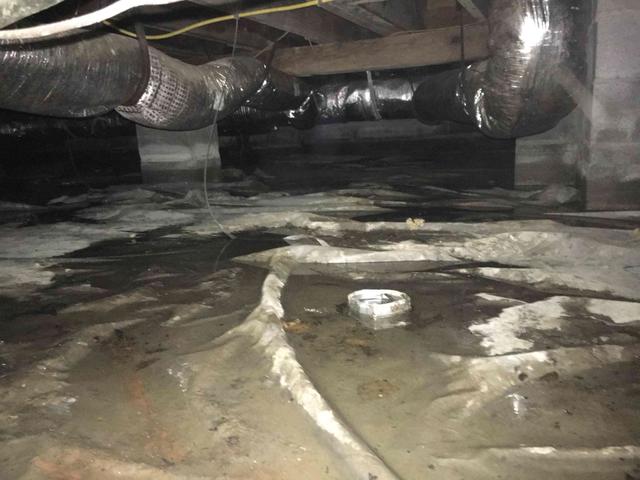
Water on Vapor Barrier
Moisture is puddling on top of this vapor barrier. This can be a result of condensation, water infiltration and in some cases a plumbing leak. In this case, it is a result of infiltration. As vapor finds its way into the crawl space, it contributes to increasing the relative humidity and creating the right conditions for microbial growth to occur.
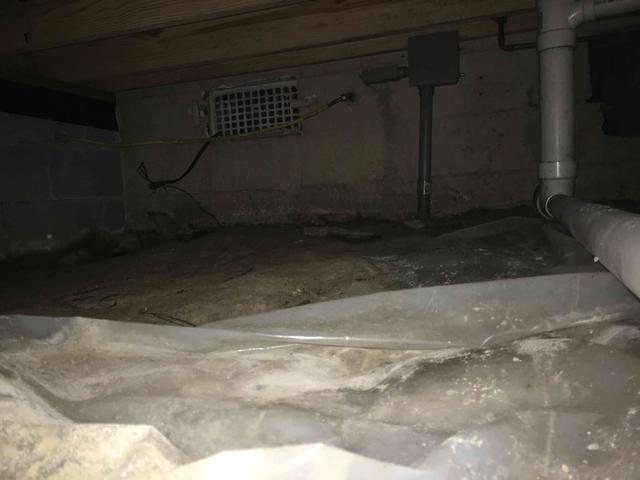
Missing Vapor Barrier
We often find that large sections of a crawl space are not covered by a vapor barrier. The purpose of a vapor barrier is to prevent the earth's moisture from affecting the crawl space. When there are areas that are missing the vapor barrier, or barriers that are unsealed, allow the earth's moisture to saturate the space.
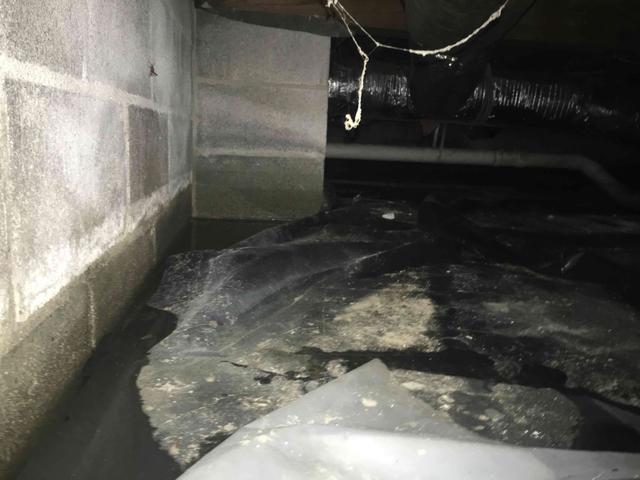
Water infiltration
Bulk water enters the crawl space either from the ground or by seeping through porous block walls. Water that collects against the side of the house during heavy rain is a prime candidate for moisture to find its way through the wall and into the crawl space contributing to high relative humidity and creating the ideal environment for snakes, critters, and insects.
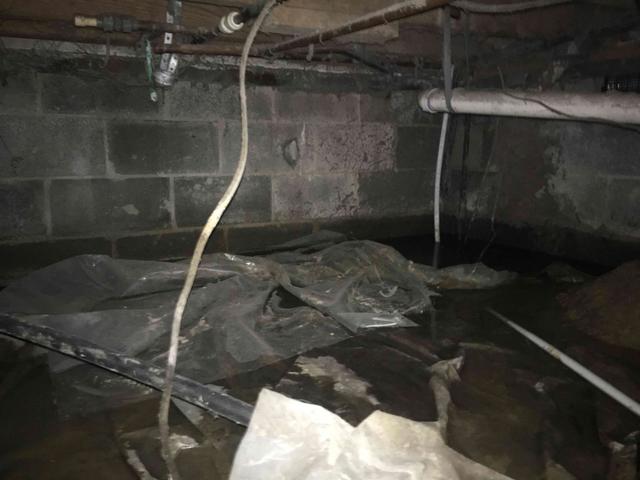
Standing Water in Crawl Space
Water collects in the low spots of a crawl space, and in many cases has no where to drain to. Standing water contributes to the environment in the crawl space that supports microbial growth, and creates a habitat where rodents, pests, and critters like to make their home and thrive.
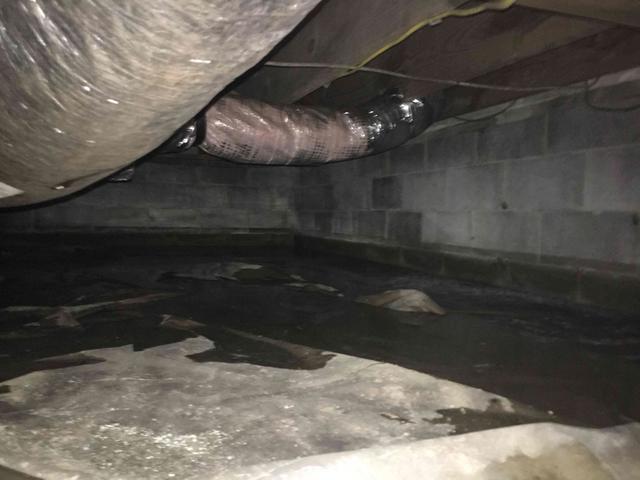
Bulk Water Infiltration
Evidence of bulk water can be identified by silt and sediment on top of the vapor barrier or in low spots where water has collected. Even if puddling isn't present, we can identify where water infiltration and moisture have occurred. We look for staining on the walls and efflorescence. Efflorescence is the white chalky substance you may notice on the surface of a block wall; it tells us that moisture has pulled the minerals in the block to the surface.

